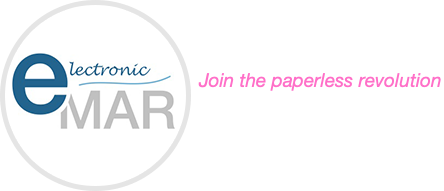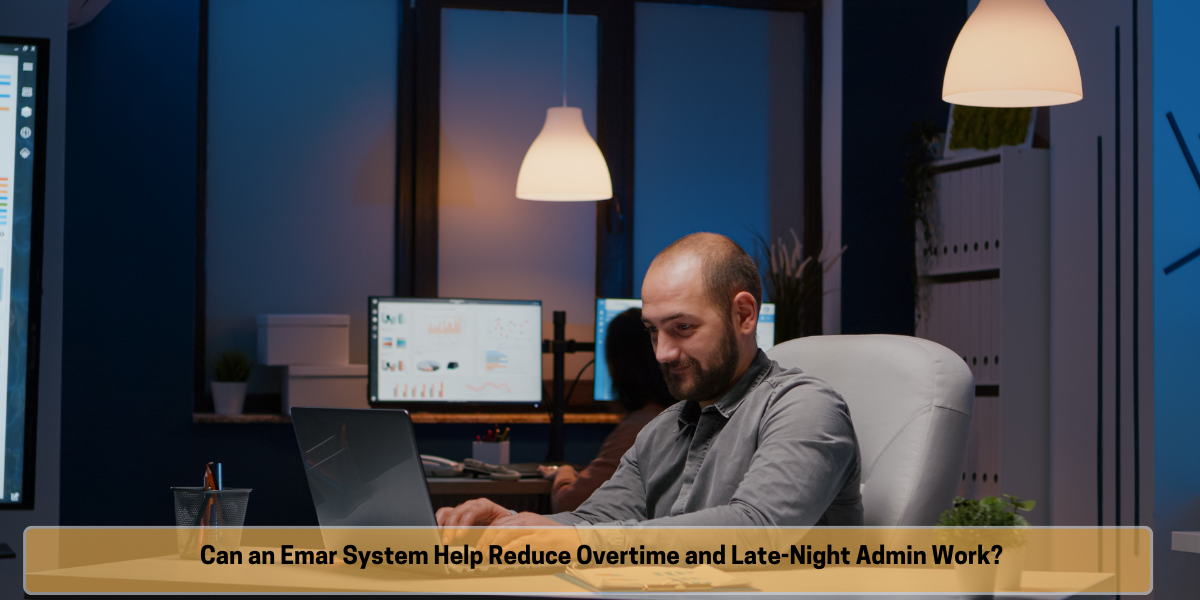Nurses and healthcare staff often have to deal with long and demanding shifts, where patient care must remain the top priority. However, administrative tasks—particularly related to medication documentation—can quickly build up. This added burden, especially when left to the end of the day, leads to longer working hours, overtime, and increased stress. Electronic Medication Administration Records (eMAR) systems offer a practical solution by streamlining documentation and improving workflow efficiency. They help healthcare professionals manage their time more effectively and maintain a healthier work-life balance.
Streamlined documentation process
A major benefit of implementing an eMAR system is the reduction in time spent on medication documentation. In traditional paper-based systems, nurses and care staff must manually record the administration of each medication, often at the end of their shift. This method can be time-consuming and prone to errors, particularly when managing multiple patients and complex medication schedules.
eMAR systems remove much of this burden. They automate the documentation process by logging essential information such as the medication administered, dosage, and time, often with minimal manual input. These systems also conduct automated checks to ensure accuracy, such as verifying the right medication is given at the correct time. This significantly reduces the need for end-of-shift corrections or verifications. As a result, staff spend less time on paperwork and more time on direct patient care.
Real-time updates
Another key advantage of eMAR systems is the provision of real-time updates. Rather than waiting until the end of a shift to complete records, staff can log medication administration at the point of care. This reduces the likelihood of forgotten entries or last-minute catch-up sessions.
With instant data entry, the system keeps records continuously updated. Nurses on subsequent shifts benefit from having access to current and accurate information – this improves continuity of care. This efficiency also allows staff to finish their shifts on time, reducing the need for overtime and helping them maintain a better work-life balance.
Improved shift handover
Effective shift handovers are essential for maintaining high-quality patient care. However, when staff must search through stacks of paper records or chase verbal updates, the process becomes slow and error-prone. An eMAR system offers a solution by providing clear, structured, and up-to-date records for all medications administered during the shift. Incoming staff can access patient medication histories and schedules instantly, with no need to rely on memory or sift through paperwork. This results in quicker and more reliable handovers, with a reduced risk of missed information. It also saves time for both outgoing and incoming staff, contributing to a more efficient workflow.
Enhanced scheduling and coordination
eMAR systems often integrate with other healthcare software, including staff scheduling and care planning tools. This integration allows for better coordination of medication rounds and clearer visibility into when medications are due throughout the day or night. With a structured view of medication schedules, staff can plan their time more effectively and avoid last-minute rushes near the end of their shift. By reducing the pressure of unexpected or overdue tasks, this proactive approach promotes more even workload distribution and reduces stress. It also contributes to timely medication administration, which is critical for patient safety.
Improved accuracy and compliance
eMAR systems support compliance with medication safety standards by minimising human error. Automated alerts, barcode scanning, and verification protocols help ensure that the correct medication is given to the correct patient at the correct time. This not only improves patient outcomes but also reduces the need for time-consuming corrections or incident reports. With fewer errors to track and resolve, staff experience less administrative pressure, particularly during or after long shifts. This accuracy supports a smoother workflow and a safer care environment.
Perhaps one of the most meaningful advantages of eMAR adoption is its positive impact on work-life balance. With reduced documentation time, fewer errors to resolve, and quicker handovers, staff can leave work on time and avoid the mental and physical fatigue associated with overtime. When nurses and care staff are able to complete their duties during regular hours, they have more time to rest, recharge, and attend to personal commitments.
This improvement in work-life balance contributes to higher job satisfaction, better morale, and reduced burnout. In turn, healthcare organisations benefit from better staff retention and more consistent, high-quality patient care.







